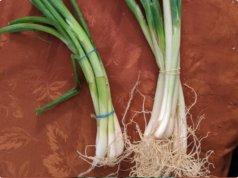It’s one of the most iconic moments in love stories around the world:
A man takes a deep breath, pulls out a ring, and slowly kneels on one knee, eyes locked with the love of his life, before asking the life-changing question:
“Will you marry me?”
The scene plays out in real life, in movies, in proposals under city lights or on quiet beaches — and it never fails to stir emotion. But have you ever paused and wondered:
👉 Why kneel?
👉 Why one knee?
👉 Where did this tradition even come from?
It’s more than just a romantic pose.
It’s a gesture steeped in history, symbolism, and deep emotional meaning.
1. A Symbol of Honor and Respect
Kneeling isn’t just a dramatic flourish — it’s a physical act of humility.
By lowering himself, the person proposing is symbolically saying:
“I’m not above you. I’m with you. I honor you. I’m giving you my heart on your terms.”
In a world where love is often about equality and partnership, this gesture reflects deep respect — not submission, but devotion. It’s a silent promise: “You matter more than my pride.”
2. Rooted in Medieval Chivalry
The tradition traces back to medieval Europe, where knights would kneel before their lords or queens as a sign of loyalty, allegiance, and honor.
These weren’t just formal gestures — they were sacred acts of commitment. A knight kneeling swore his life, courage, and service to a higher cause.
When men began kneeling to propose in the 19th century, they were borrowing from this powerful symbolism — framing love as a noble quest and marriage as a solemn vow.
By kneeling, a man wasn’t just asking for a hand in marriage — he was pledging eternal loyalty, just as a knight would to his king or queen.
3. A Gesture of Vulnerability and Love
Let’s be honest: kneeling makes you vulnerable.
You’re off-balance. You’re exposed. You’re waiting for an answer that could change your life.
That’s the point.
Love isn’t about control. It’s about trust.
And in that moment — heart pounding, hands trembling — the person proposing is laying bare their hopes, fears, and deepest desire.
One knee on the ground isn’t about hierarchy — it’s about emotional courage.
It says:
“I’m not hiding. I’m here. I love you. And I’m ready — no matter what you say.”
4. Reinforced by Romance and Pop Culture
While the tradition has ancient roots, it was Hollywood and romance that made it universal.
From black-and-white films to modern rom-coms, the one-knee proposal has become the gold standard of romantic gestures.
Think of candlelit dinners, surprise flash mobs, or grand public declarations — they almost always end with that single knee touching the ground.
These images shape expectations.
They make the moment feel epic, timeless, and cinematic.
And for many couples, recreating that scene isn’t about tradition — it’s about creating a memory they’ll tell their grandchildren about.
5. More Than a Tradition — It’s a Moment That Lasts Forever
At its heart, kneeling on one knee isn’t about following rules.
It’s about making a moment sacred.
Whether it’s:
- A quiet whisper in the kitchen
- A surprise under the Eiffel Tower
- Or a simple question after years together
…that single knee on the ground marks a turning point — the moment two people choose forever.
And even if the world changes — if proposals become more equal, more creative, more diverse — this gesture will likely endure.
Because sometimes, the most powerful things we can say…
…are said without words.
Final Thoughts: It’s Not About the Knee — It’s About the Heart
So why do men kneel when they propose?
Because love, at its purest, is humble.
It’s respectful.
It’s brave.
And sometimes, the best way to show it — in a world full of noise and distraction — is to quietly get down on one knee and let your heart speak.
One knee. One question. One lifetime of love.










